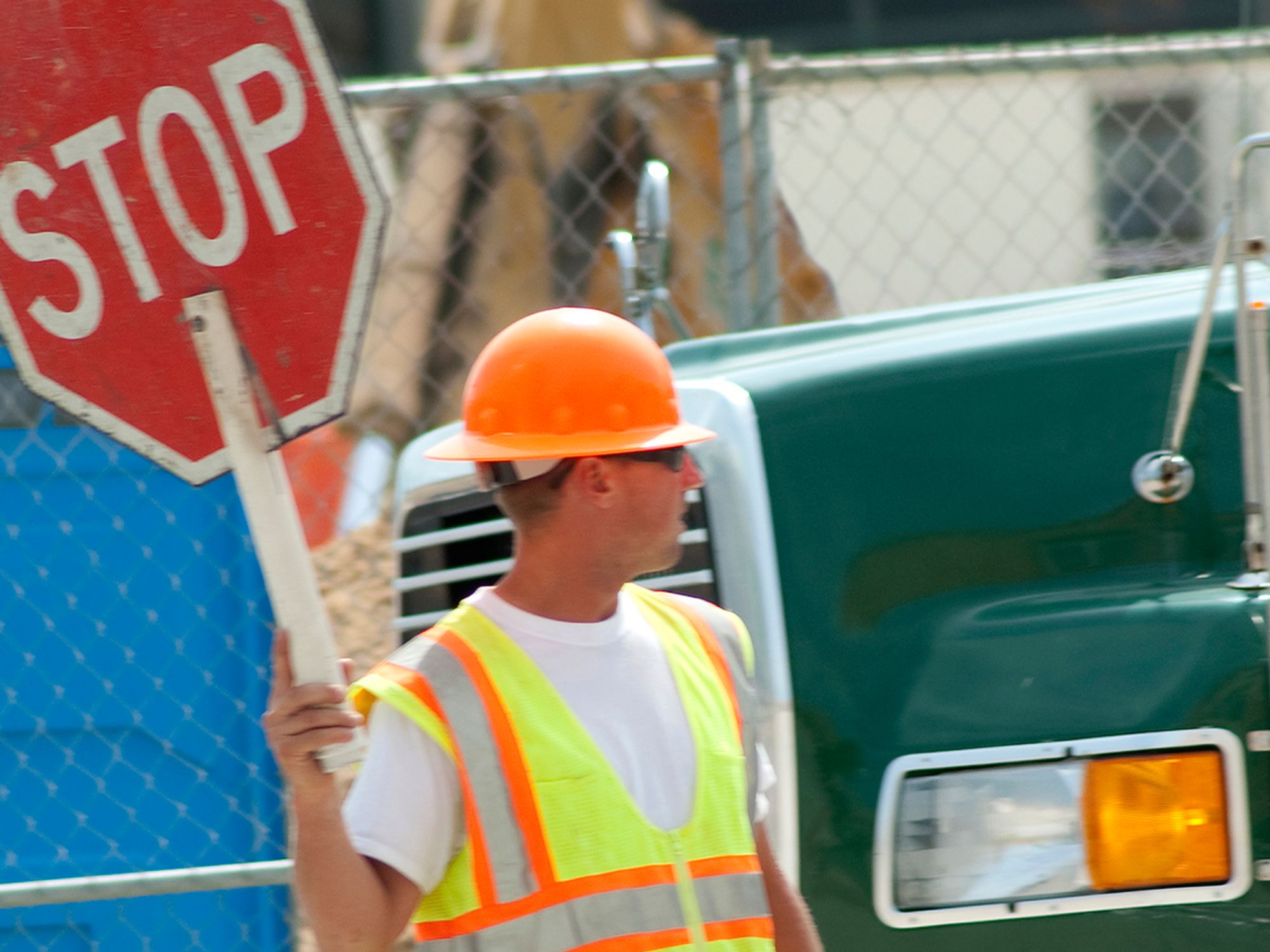Employee protection and training

- Employers must protect employees in work zones by providing them with protective equipment to help keep them safe.
- Poor worker knowledge is a major cause of work zone injuries, illnesses, and fatalities which is why employees must be trained before entering the work zone.
- If employees will be operating equipment, training should be based on the manufacturer’s manuals and include hands-on instruction.
Employee protection
While there are many hazards, there are also many ways to protect employees in work zones:
- Require they wear highly visible clothing and a light-colored hard hat. During the day, they must wear a vest, shirt, or jacket that is orange, yellow, yellow-green, or fluorescent version of these colors. At night, the vest, shirt, or jacket must be retroreflective.
- Have employees work where drivers can see them, but as far as possible from traffic. Drivers may not be able to see well when the sun is low in the sky or when it is rainy, foggy, or dark.
- Communicate the importance of getting in and out of traffic spaces and heavy equipment areas quickly and safely.
- Stress staying alert.
- Ensure employees are trained and authorized to operate equipment or vehicles.
- Require seat belts be worn when operating equipment or vehicles.
- Stress employees make visual contact with workers on foot near them, before moving equipment.
- Instruct employees to inspect equipment as needed.
- Use equipment with rollover protective structures.
- Ensure employees know to chock two wheels when leaving equipment.
- Protect employees working on trenching and excavating from cave-in hazards.
- Require that fall protection is used when working on a bridge over another roadway or over water.
Employee training
Work zones are dangerous places to work. Poor worker knowledge, due to lack of training or ineffective training, is a major cause of work zone injuries, illnesses, and fatalities. For this reason, the Occupational Safety and Health Administration (OSHA) requires personnel to be trained before they can work in the work zone. If the operation of equipment is involved, the American National Standards Institute (ANSI) recommends that this training be based on the manufacturer’s manuals and that it includes hands-on instruction.
Work zone orientation
All personnel, regardless of occupation, must be oriented to each work zone’s hazards and how to avoid them. This includes personnel visiting the worksite. For construction workers, the National Institute for Occupational Safety and Health (NIOSH) suggests more in-depth training on topics such as:
- Recognizing, eliminating, or avoiding hazards involving equipment;
- Knowing the locations and sizes of blind spots around equipment;
- Knowing the hazards and protective measures associated with working at night; and
- Understanding communication methods and alarms.
Redundancy in communications is best. For example, in addition to motion alarms, use a spotter.
OSHA regulations require equipment operators to be fully trained on the equipment they will operate. Training should include instruction on:
- How to avoid rollovers;
- Information on the clearances that must be maintained between vehicles and hazards, such as unstable surfaces, trenches, excavations, and overhead utility lines; and
- Instruction on the location, size, and configurations of blind spots and what can be done to minimize their potential for contributing to accidents.
